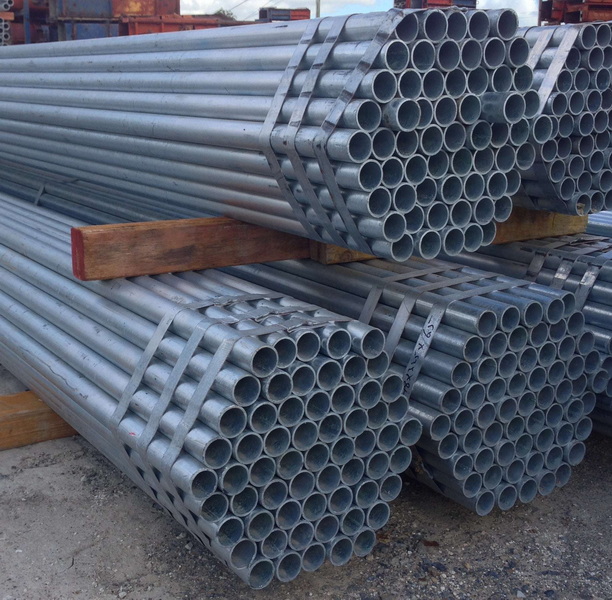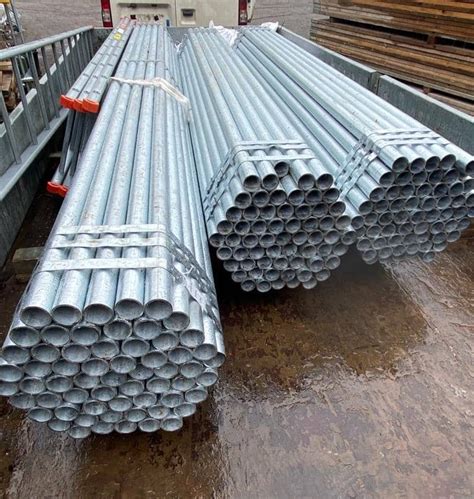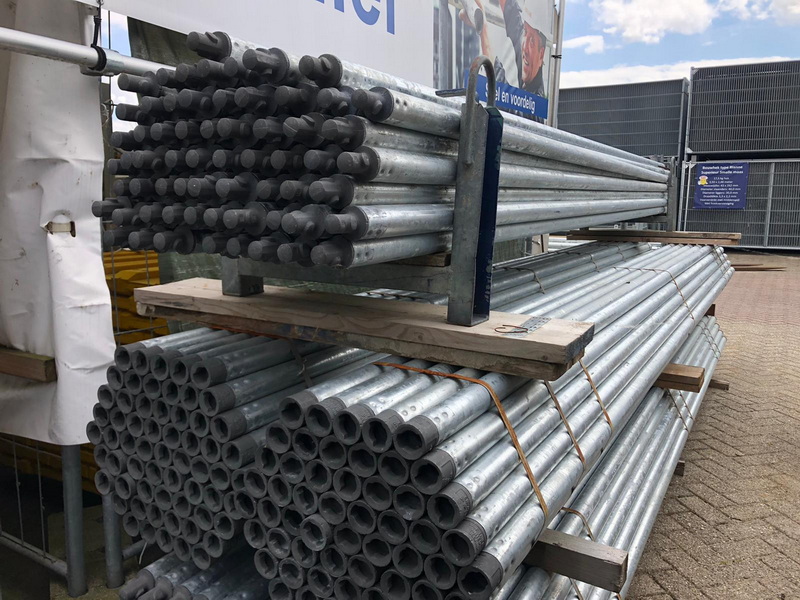Content Menu
● Material Composition: Steel vs. Aluminum
>> Steel Scaffold Tubes
>> Aluminum Scaffold Tubes
● Wall Thickness
● Common Wall Thicknesses:
● Outer Diameter
● Length of the Tube
● Manufacturing Standards and Tolerances
● Protective Coatings and Environmental Factors
● Hollow vs. Solid Tubes
● How to Calculate 21 Ft Scaffolding Tube Weight
● Impact of Weight on Safety and Logistics
>> Safety Considerations:
>> Logistics:
● Choosing the Right Weight for Your Application
● Conclusion
● FAQ
>> 1. How much does a 21 ft steel scaffold tube weigh?
>> 2. Is aluminum lighter than steel for scaffold tubes?
>> 3. Does wall thickness significantly affect weight?
>> 4. How do I calculate scaffold tube weight?
>> 5. Why does tube diameter matter for weight?
The weight of a 21 ft scaffolding tube is a critical consideration for construction projects, impacting transportation costs, worker safety, and structural integrity. Understanding the factors that influence this weight ensures compliance with safety standards and efficient project planning.

Material Composition: Steel vs. Aluminum
The material of a scaffold tube is the primary factor affecting its weight. Two common materials are used: steel and aluminum.
Steel Scaffold Tubes
- Density: ~7,850 kg/m³.
- Typical Weight: A 21 ft (6.4 m) steel tube with a 48.3 mm outer diameter and 4.0 mm wall thickness weighs approximately 28.56 kg.
- Advantages: High strength, durability, and load-bearing capacity.
- Standards: Complies with EN 10219-1 S355 and BS 1139.
Aluminum Scaffold Tubes
- Density: ~2,700 kg/m³ (2.5 times lighter than steel).
- Typical Weight: A similar-sized aluminum tube weighs ~10.88 kg.
- Advantages: Corrosion resistance, easier handling, and reduced transportation costs.
- Trade-offs: Lower load capacity compared to steel.
Weight Comparison:
| Material | 21 Ft Tube Weight (kg) | Weight Per Meter (kg/m) |
| Steel | 28.56 | 4.50 |
| Aluminum | 10.88 | 1.70 |
Wall Thickness
Wall thickness directly influences the weight of a 21 ft scaffolding tube. Thicker walls increase material volume, thus raising the overall weight.
Common Wall Thicknesses:
- 3.2 mm: Standard for general-purpose steel tubes, weighing ~22.68 kg for a 21 ft tube.
- 4.0 mm: Used for heavy-duty applications, increasing weight to ~28.56 kg.
- 2.4 mm: Lightweight option for low-load scenarios (rarely used in scaffolding).
Formula for Weight Calculation:
Weight (kg/m)=0.02466×Wall Thickness (mm)×(Outer Diameter (mm)−Wall Thickness (mm))
Example (48.3 mm OD, 4.0 mm wall):
0.02466×4.0×(48.3−4.0)=4.44kg/m≈28.56kg for 6.4 m
Outer Diameter
The outer diameter (OD) of the tube affects its cross-sectional area and, consequently, its weight. Standard scaffolding tubes have an OD of 48.3 mm (1.9 inches). Larger diameters require more material, increasing weight, while smaller diameters reduce it.
Key Standards:
- EN 39: Mandates 48.3 mm OD for compatibility with fittings.
- BS 1139: Specifies the same diameter for UK scaffolding systems.
Length of the Tube
While the standard length of a scaffold tube is 21 ft (6.4 m), cutting it to shorter lengths reduces weight proportionally. However, altering the length affects structural applications and requires recalibrating load-bearing calculations.
Weight Distribution Example:
| Length (ft) | Length (m) | Steel Weight (kg) | Aluminum Weight (kg) |
| 21 | 6.4 | 28.56 | 10.88 |
| 10 | 3.05 | 13.30 | 5.18 |
| 5 | 1.52 | 6.65 | 2.58 |
Manufacturing Standards and Tolerances
Scaffold tubes must adhere to international standards that specify dimensions and material properties, indirectly affecting weight:
1. EN 10219-1 S355: European standard for steel tubes, ensuring consistent wall thickness and OD.
2. BS 1139: British standard for scaffolding components, including weight tolerances.
3. ASTM A53: U.S. standard for steel pipes, with similar weight specifications.
Tolerances in wall thickness (±0.56 mm) and OD (±0.5 mm) can cause minor weight variations between batches. Manufacturing imperfections or deviations from standard can result in tubes that are slightly heavier or lighter than specified.

Protective Coatings and Environmental Factors
Coatings add minimal weight but are crucial for durability:
1. Galvanization: Zinc coating adds ~0.05 kg/m to steel tubes.
2. Powder Coating: Adds negligible weight but improves corrosion resistance.
3. Environmental Exposure: Corrosion or rust in uncoated tubes can reduce effective wall thickness over time, altering weight and strength.
Additional Considerations:
- Painted Tubes: May add a few grams per meter, but rarely significant.
- Salt or Chemical Exposure: Can accelerate corrosion, reducing weight and structural integrity over time.
Hollow vs. Solid Tubes
While virtually all scaffold tubes are hollow for weight and cost efficiency, it's worth noting that a solid bar of the same dimensions would be significantly heavier and impractical for scaffolding. The hollow design is essential for balancing weight, strength, and handling.
Comparison:
- Hollow Tube (48.3 mm OD, 4.0 mm wall): ~28.56 kg for 21 ft.
- Solid Bar (48.3 mm OD): Over 120 kg for 21 ft-impractical for manual handling or structural use in scaffolding.
How to Calculate 21 Ft Scaffolding Tube Weight
Use the formula below to calculate the weight of any scaffold tube:
Weight (kg)=0.02466×Wall Thickness (mm)×(OD (mm)−Wall Thickness (mm))×Length (m)
Example Calculation for a 21 Ft Steel Tube:
- OD: 48.3 mm
- Wall Thickness: 4.0 mm
- Length: 6.4 m
0.02466×4.0×(48.3−4.0)×6.4=28.56kg
For Aluminum: Use the same formula, but the density factor changes to 0.00838 for aluminum.
Impact of Weight on Safety and Logistics
Safety Considerations:
- Manual Handling: Heavier steel tubes increase worker fatigue and injury risk. Proper lifting techniques and team lifts are essential for tubes over 25 kg.
- Structural Load: Heavier tubes may exceed scaffold design limits if not accounted for, especially on suspended or mobile scaffolds.
- Stability: Heavier tubes can improve stability in some cases, but excessive weight may increase the risk of collapse if the foundation is inadequate.
Logistics:
- Transportation Costs: Steel tubes cost more to transport due to higher weight, impacting project budgets.
- Storage: Heavier tubes require robust storage systems to prevent bending, warping, or accidental rolling.
- Assembly and Disassembly: Lighter tubes speed up erection and dismantling, reducing labor costs and time.
Choosing the Right Weight for Your Application
Selecting the appropriate 21 ft scaffolding tube weight involves balancing several factors:
- Load Requirements: Heavy-duty work (bricklaying, stonework) may require thicker, heavier tubes for safety.
- Handling Needs: For high-rise or mobile scaffolds, lighter aluminum tubes may be preferable.
- Environmental Exposure: Use galvanized steel or aluminum in corrosive environments.
- Budget Constraints: Aluminum tubes cost more upfront but may save on labor and transport.
Consult with a scaffolding engineer or supplier to ensure your choice meets both safety standards and practical needs.
Conclusion
The weight of a 21 ft scaffolding tube is determined by material composition, wall thickness, outer diameter, length, and manufacturing standards. Steel tubes, while heavier (~28.56 kg), offer superior strength for high-load applications, whereas aluminum tubes (~10.88 kg) prioritize ease of handling. Coatings, environmental exposure, and manufacturing tolerances also play a role, though to a lesser extent. Always calculate weight using the formula 0.02466×Wall Thickness×(OD−Wall Thickness)×Length and adhere to safety guidelines during transport and installation. Understanding these factors ensures efficient project planning and compliance with international scaffolding standards.

FAQ
1. How much does a 21 ft steel scaffold tube weigh?
A standard 21 ft steel tube with a 48.3 mm OD and 4.0 mm wall thickness weighs 28.56 kg. Thinner walls (3.2 mm) reduce the weight to ~22.68 kg.
2. Is aluminum lighter than steel for scaffold tubes?
Yes. Aluminum tubes are 2.5 times lighter than steel. A 21 ft aluminum tube weighs ~10.88 kg compared to 28.56 kg for steel.
3. Does wall thickness significantly affect weight?
Absolutely. Increasing wall thickness from 3.2 mm to 4.0 mm adds ~5.88 kg to a 21 ft steel tube.
4. How do I calculate scaffold tube weight?
Use the formula:
Weight=0.02466×Wall Thickness×(OD−Wall Thickness)×Length
For a 21 ft (6.4 m) steel tube:
0.02466×4.0×(48.3−4.0)×6.4=28.56kg
5. Why does tube diameter matter for weight?
Larger diameters increase the cross-sectional area, requiring more material. The industry standard 48.3 mm OD ensures compatibility while balancing weight and strength.






















